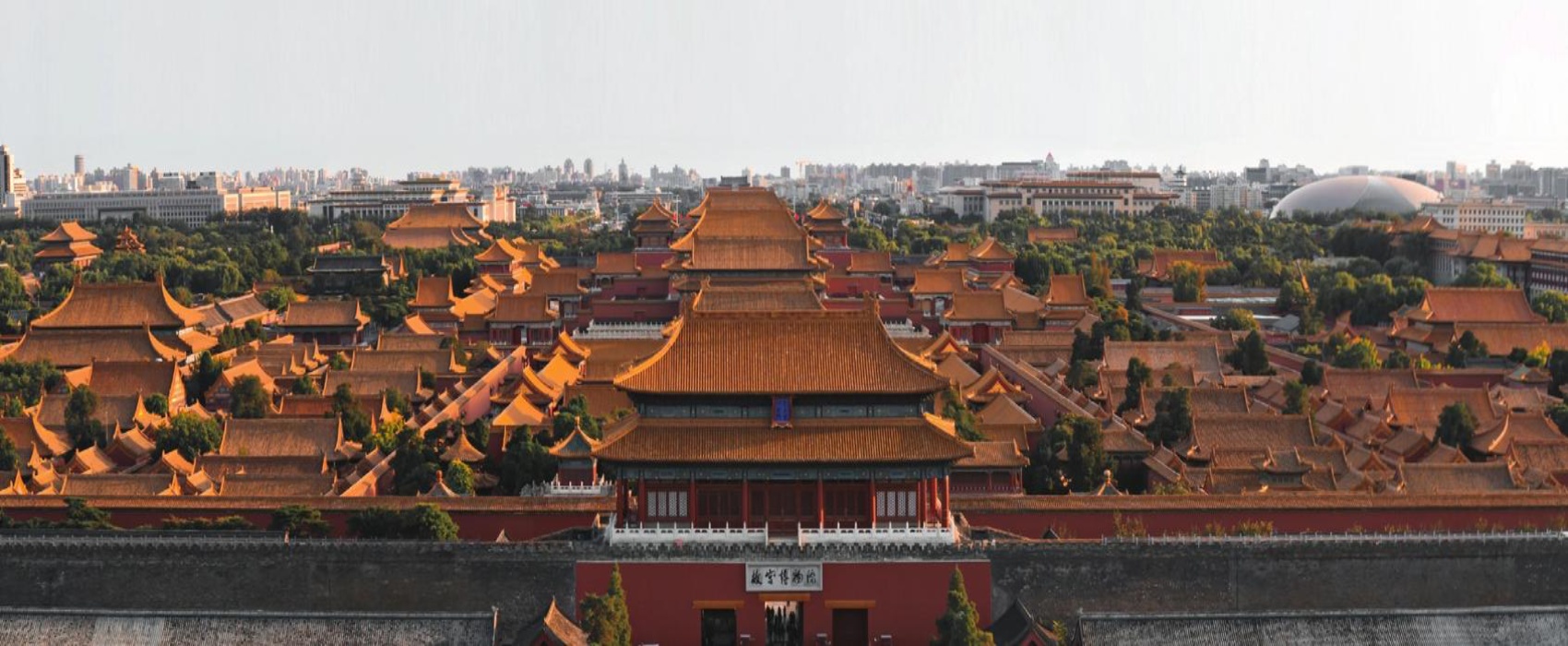The Forbidden City, also known as the Palace Museum, is located in the heart of Beijing. It served as the imperial palace of China during the Ming and Qing dynasties (1368-1911). Listed as a World Heritage Site in 1987, the Forbidden City is the world’s largest and best-preserved ancient wooden palace complex.
Constructed during the reign of Emperor Chengzu of the Ming Dynasty (1368-1644) and completed between 1406 and 1420, the Forbidden City served as the residence of 24 emperors and their families, serving as the ceremonial and political center of ancient Chinese government for 500 years. After the last Chinese emperor left the palace, the Forbidden City became a museum open to the public in 1925. From then on, the Forbidden City was no longer a “forbidden place,” allowing ordinary people to take a virtual journey through time and glimpse the secrets and extravagances of imperial life.
The Forbidden City is a vast, rectangular building, covering 72 hectares and boasting over 9,000 rooms. It is divided into two sections: the Outer Court in the south, used for the conduct of state affairs, and the Inner Court in the north, used for residences. The Forbidden City is not only a magnificent architectural masterpiece, but also a treasure trove of 1.8 million works of art, including ancient paintings and calligraphy, royal artifacts, ancient books, and archives. A must-see in Beijing and the world’s most visited museum, it’s worth dedicating half a day to a full day to appreciate this precious piece of Chinese cultural heritage.
1. Entering and Exiting the Forbidden City:
The Forbidden City only allows one-way traffic from north to south. Visitors can only enter through the Meridian Gate in the south and exit through the Shenwu Gate or Donghua Gate in the north.
2. Time Plan:
It is recommended to allow two to four hours to explore the main palace along the central axis. If you are interested in exploring the West and East Wings, a full day is required for a thorough tour.
3. Central Axis Classic Tour Route:
Meridian Gate → Gate of Supreme Harmony → Hall of Supreme Harmony → Hall of Central Harmony → Hall of Preserving Harmony → Gate of Heavenly Purity → Palace of Heavenly Purity → Hall of Union and Peace → Palace of Earthly Tranquility → Imperial Garden → Gate of Divine Prowess
4. Layout and Main Palaces
• North-South Length: 961 meters (1,051 yards)
• East-West Width: 753 meters (823 yards)
• Total Area: 72 hectares (178 acres)
• Building Area: 15 hectares (37 acres)
The Forbidden City is rectangular in shape, with a 10-meter (33-foot) high outer wall and a 52-meter-wide moat surrounding it. The Forbidden City has four gates: Wumen in the south, Shenwumen in the north, Xihuamen in the west, and Donghuamen in the east. Each corner of the outer wall features an intricately designed corner tower. Whether standing on the city walls, towers, or on Jingshan Hill to the north of the Forbidden City, one can appreciate the grandeur of the Forbidden City complex. By comparison, the Forbidden City is four times the size of India’s Taj Mahal (18 hectares), which consists primarily of gardens. The Forbidden City boasts a vast array of palaces, exceeding even the 11-hectare building area of the Palace of Versailles in France. Towering outer walls enclose over 90 palaces and courtyards, forming an intricate maze with over 9,000 rooms! The layout of the palaces is perfectly symmetrical, with a north-south central axis cleverly running through not only the Forbidden City but also modern-day Beijing. The main halls are arranged along this central axis, with smaller halls scattered east and west, running north-south. The five corridors are the Central Axis, the West Wing, the East Wing, the Outer West Road, and the Outer East Road. The Forbidden City in Beijing is divided into the Southern and Northern Courts according to their respective functions. The Outer Court, used for state ceremonies, features the Hall of Supreme Harmony, the Hall of Central Harmony, and the Hall of Preserving Harmony, along the central axis. To the west lies the Hall of Martial Honor, and to the east lies the Hall of Wenhua. The Inner Court, the emperor’s residence, includes the three central palaces of the emperor and empress: the Palace of Heavenly Purity, the Hall of Union and Peace, and the Palace of Earthly Tranquility. Flanking the Inner Court are the Western Six Palaces and the Eastern Six Palaces, housing concubines and maids of honor of different ranks. At the northernmost end of the inner court there is a royal garden for viewing and entertainment.
5. How to Get to the Forbidden City
Entrance to the Forbidden City is only through the Meridian Gate, the museum’s south gate.
♥ Subway:
Take Subway Line 1 and get off at Tiananmen East Station (Exit B) or Tiananmen West Station (Exit B). Walk 500 meters (550 yards) to the Tiananmen Tower, then walk north to the Meridian Gate.
If you want to visit Tiananmen Square first, in addition to Subway Line 1, you can also take Subway Line 2 and get off at Qianmen Station (Exit A). Walk north across the square to the Tiananmen Tower, then continue north to the Meridian Gate.
♥Bus:
Take bus numbers 1, 2, 52, 82, 120, or 1 or 2 to Tiananmen East Station; or take bus numbers 1, 5, 52, or 1 or 2 to Tiananmen West Station.
6. How to Exit the Forbidden City
Exit the station from either Beishenwumen or Donghuamen.
From Shenwumen, take bus No. 58, 101, 103, 109, 124, or 128, or sightseeing bus No. 1 or 2, at Shenwumen Station. Alternatively, take bus No. 58, 111, or 124 from Jingshan East Gate Station. If time permits, consider climbing Jingshan Hill, located opposite the gate, for panoramic views of the Forbidden City.
From Donghuamen, take sightseeing bus No. 2 from the Forbidden City East Gate Station, or take bus No. 2 or 82 from Donghuamen Station. Before leaving, take a leisurely 800-meter (875-yard) walk to Wangfujing East Street for shopping and dining.
7. How to Purchase Forbidden City Tickets
♥ The maximum daily admission is 40,000 people. During peak travel periods such as the Labor Day holiday (May 1st to 5th), the National Day holiday (October 1st to 7th), and the summer vacation (July to August), ticket prices will be adjusted dynamically, increasing the available ticket supply by approximately 25%.
♥All visitors are requested to purchase e-tickets online in advance. You can purchase through the museum’s official website (English version), WeChat mini-program (not available in English), or travel agencies that provide English-language services.
♥Tickets are sold by the relevant authorities seven days in advance between 8:00 PM and 9:00 PM, but they are always in high demand. Please purchase as early as possible. If you wish to purchase tickets without disrupting your itinerary, please consult your travel agency.
♥ Foreigners must present their passport or ID card issued by Mainland China, Hong Kong, Macau, or Taiwan when purchasing tickets. Each person is limited to one ticket per day.
♥Simply present your passport or ID card at the entrance; there is no need to collect a paper ticket. For a hassle-free trip without the hassle of buying tickets or getting lost in the hassles of public transportation, find 365 China Travel and customize your own Beijing Forbidden City itinerary.>>>apply now


